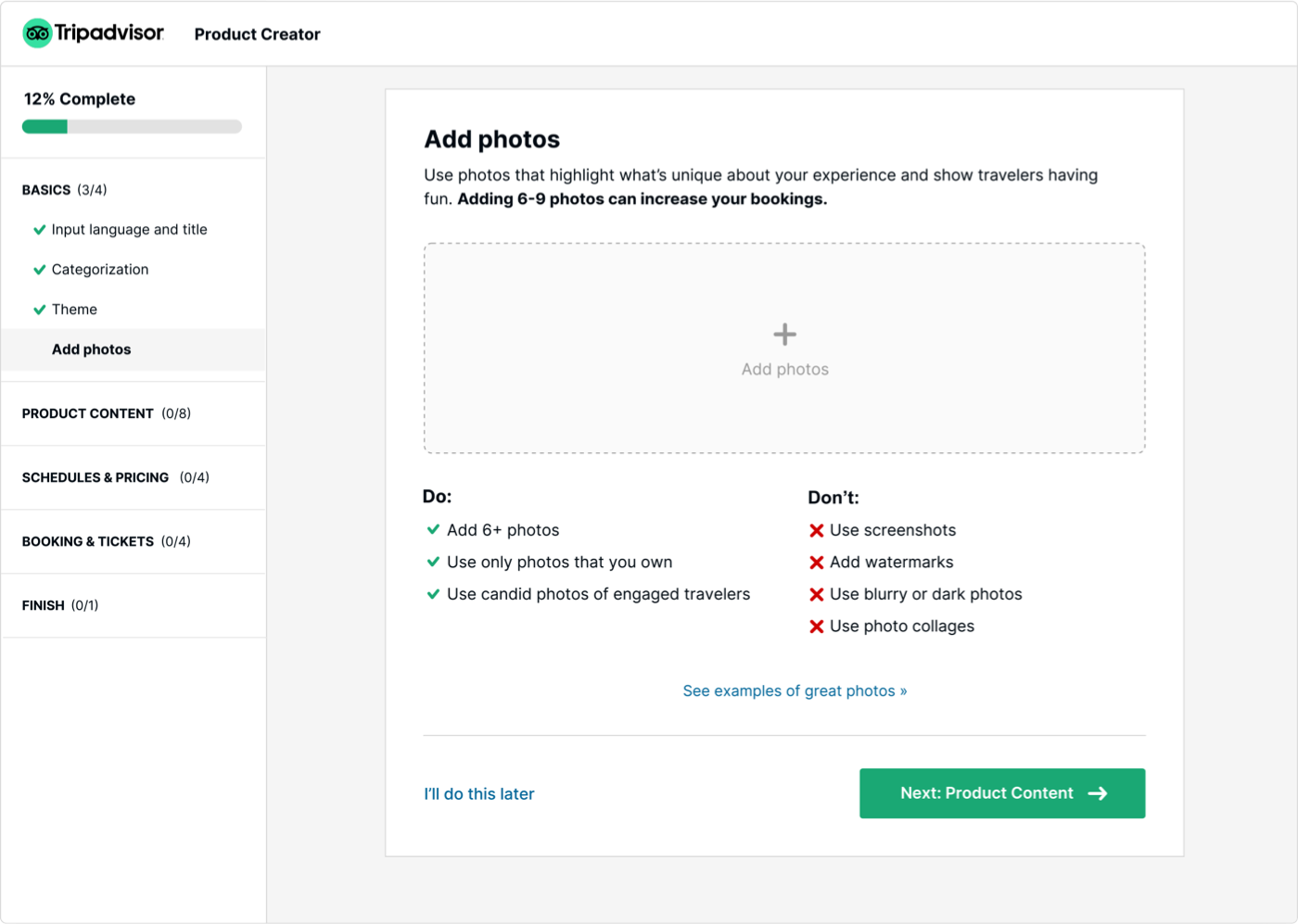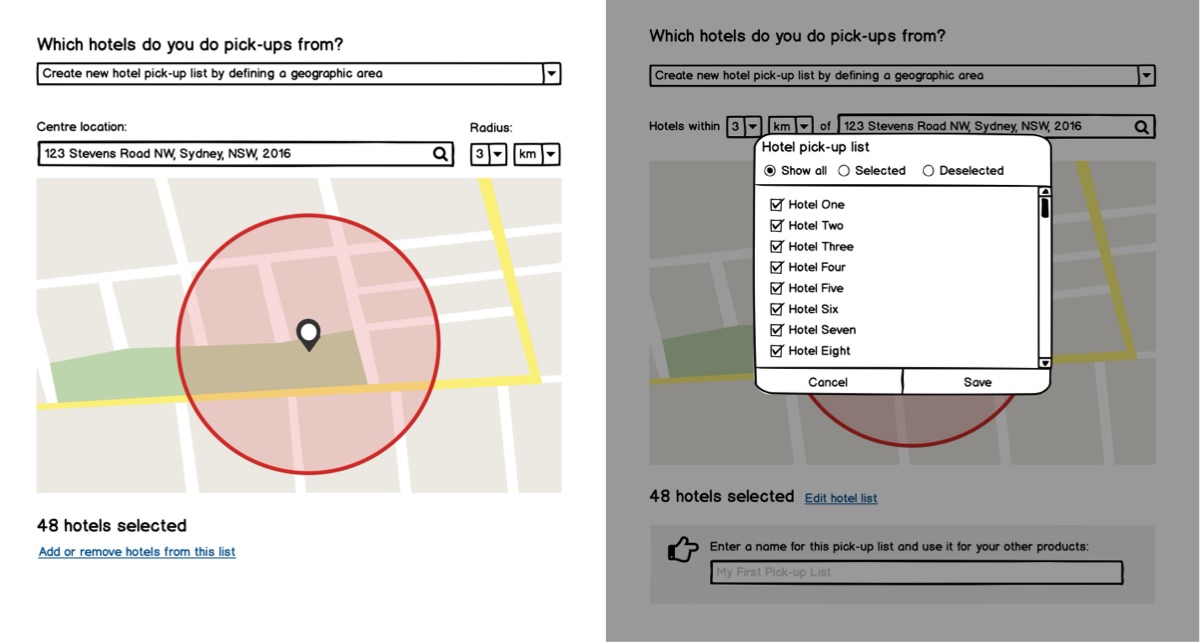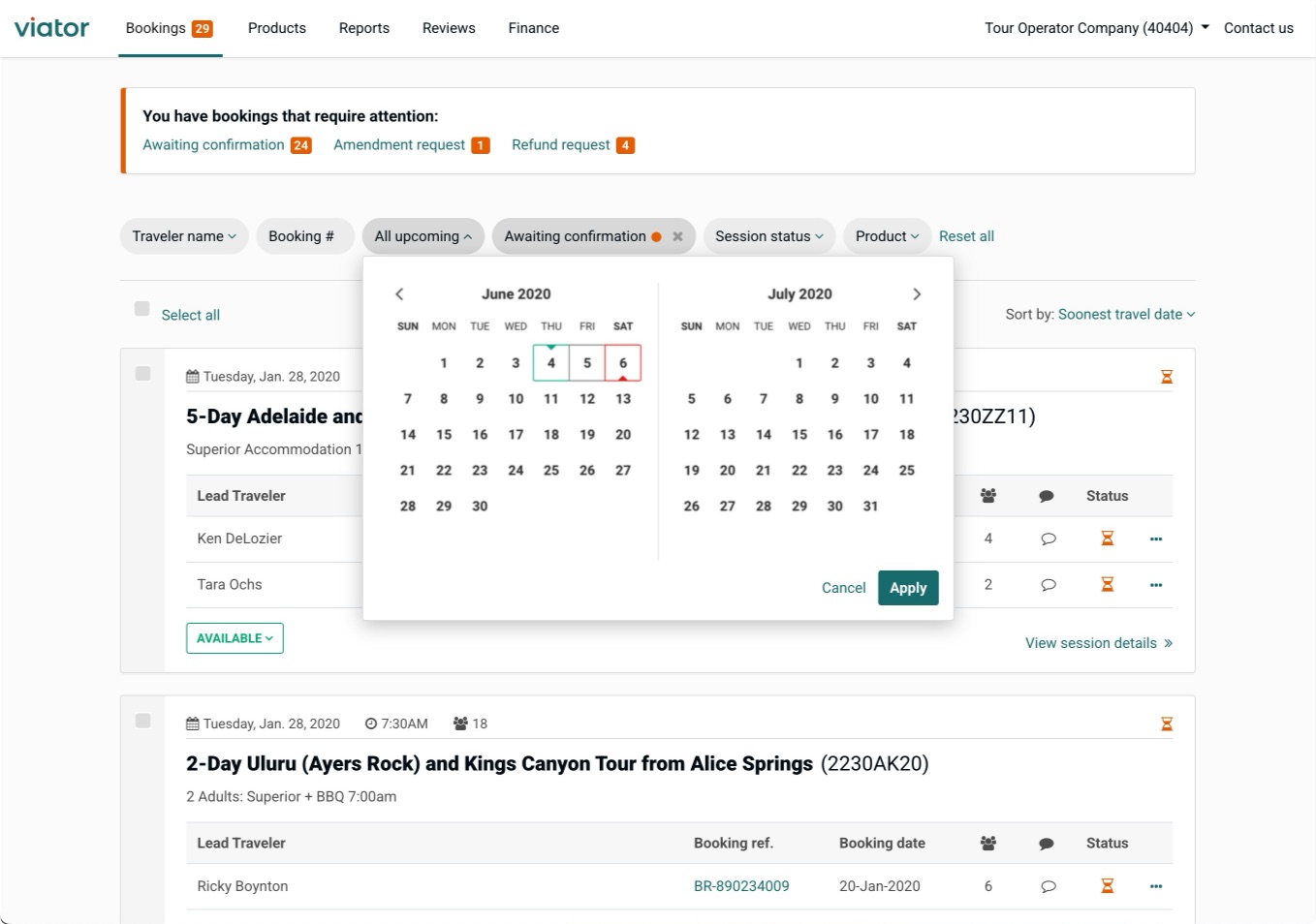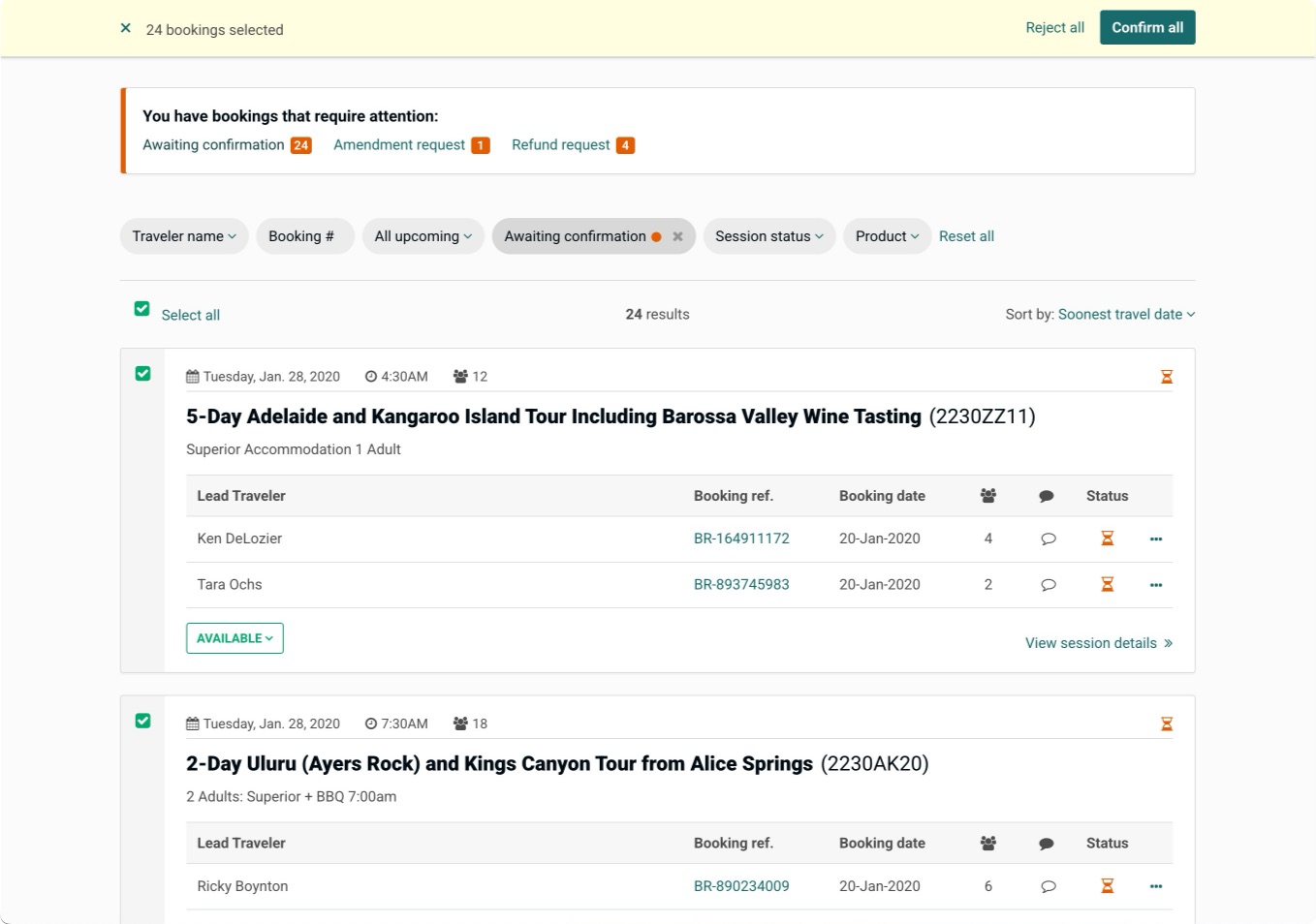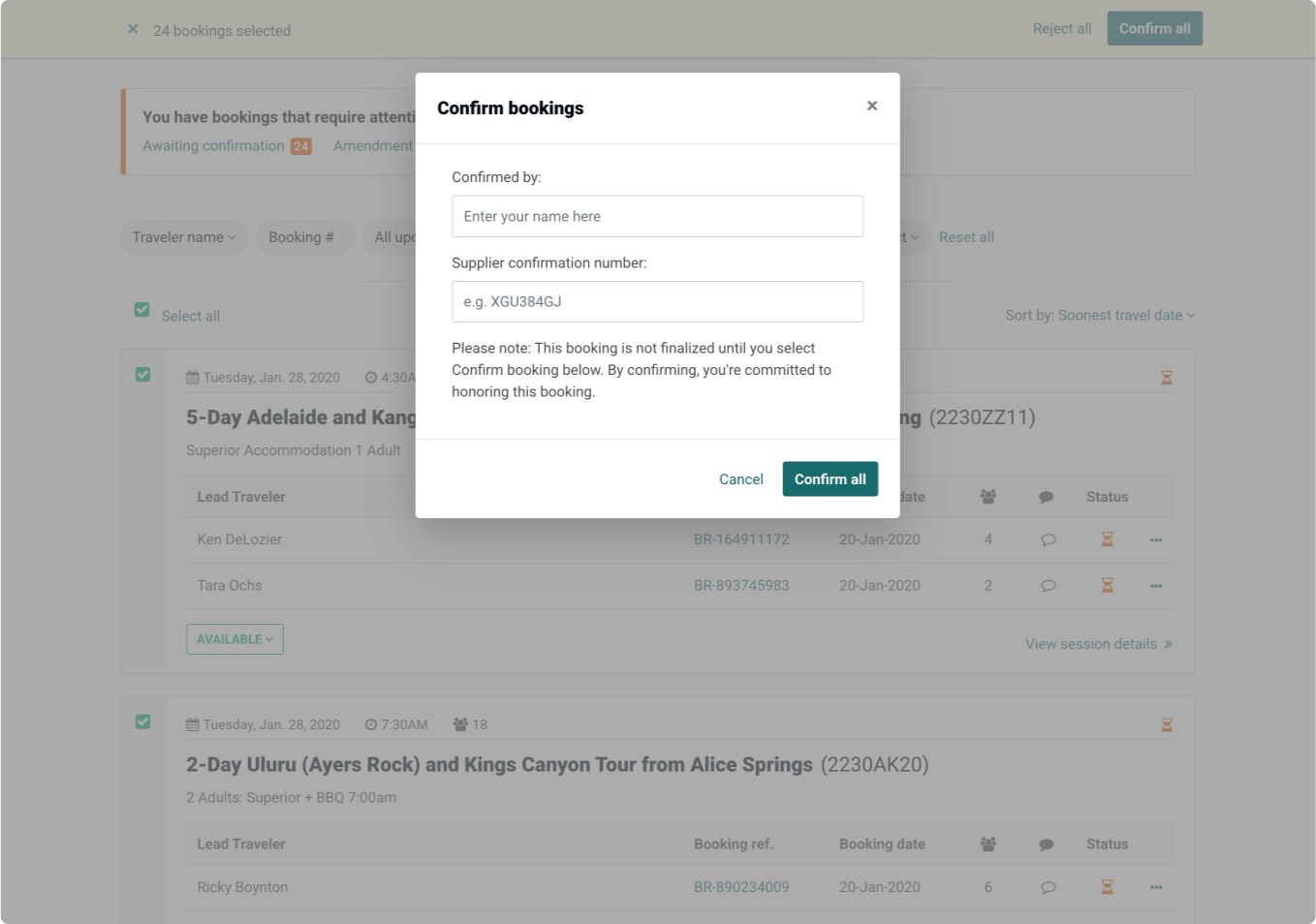Tripadvisor
Designing tools for tour operators, guides, and activity providers across Tripadvisor & Viator
Overview
Major initiatives & contributions
- →Redesigned the hotel pickup experience to eliminate dead ends and reduce operator confusion, creating a consistent, expectation-setting workflow
- → Built a calendar-based booking management tool grounded in operators’ mental models, enabling faster scheduling and reducing errors
- →Overhauled icon and asset management systems , consolidating files and streamlining export pipelines, cutting turnaround times and reducing design debt
- →Led as the sole product designer in Tripadvisor’s Sydney office after restructuring, maintaining delivery velocity across international teams
Timeline
Shifts in scope and structure
Joined Tripadvisor (Sydney) as Lead Product Designer
- →Part of a 6-person design team focused on supply-side experiences for tour operators, guides, and activity providers
6 Months In: Corporate Restructuring
- →Became the sole remaining product designer in the Sydney office.
- →Took ownership of high-priority projects and adapted internal processes to keep delivery moving across distributed teams
COVID-19: Navigating the ambiguity of a travel-dependent product
- →Navigated ambiguity of a travel-dependent product during a global shutdown
- →Re-prioritized roadmap and adjusted workflows to sustain value for operators even during low travel demand
Hotel pickup experience
Building a pickup workflow that reflects real-world complexity
Problem
- →Travelers often didn't know when/where to meet their driver
- →Operators faced confusion, no-shows, and support overhead from unclear or missing pickup details
- →Existing workflow had dead ends and vague messages, leaving users uncertain

My role
- →As Lead Product Designer, collaborated with PM and engineering lead
- →Replicated workflows in Balsamiq to map all happy + unhappy paths
- →Identified systemic gaps rather than patching isolated issues

Solution
- →Designed a consistent, expectation-setting pickup flow with clear status at every step
- →Removed dead ends: users always knew what was happening now, what happens next, and what's expected of them
- →Scaled solution across operators globally, not just as a one-off fix

Outcome
- →Reduced operator uncertainty and support tickets
- →Improved traveler trust through clarity and reliability
- →Established reusable design patterns for edge cases instead of relying on generic error messages

Booking management
Problem
- →Operators needed to manage bookings but the old system didn’t align with how they think about scheduling
- →Data was abstracted into lists and forms, causing errors, inefficiency, and extra support load
- →Lack of a bulk actions functionality made booking management arduous
My role
- → As Lead Product Designer, partnered with engineering to define the conceptual model
- → Ran cross-functional prototyping sessions to validate a calendar-based approach
- → Advocated for grounding design in operators’ mental models
Solution
- → Designed a bulk management tool reflecting how operators manage bookings in real life
- → Built interactions for accepting, rejecting, and editing booking requests seamlessly across multiple days
- → Balanced efficiency with clarity to reduce onboarding friction
Outcome
- → Operators could manage schedules more accurately and faster
- → Reduced errors and reliance on support
- → Improved trust in Tripadvisor as a core operational tool
Systemic asset redesign
Creating flexible design assets for scalable integration
I led an initiative to consolidate and modernize white-labelled icons used across the platform. The goal was to reduce turnaround time, improve consistency, and ease the burden of implementation.
- →Audited legacy assets and streamlined exports across teams
- →Created new SVG icon catalogue that, via layer/object naming conventions in source files, allowed for styling/branding of icons using CSS
- →Wrote documentation detailing usage of source files and best practises for exporting SVG assets
- →Collaborated with engineers to align asset structure with dev pipelines
Help center redesign
Restructuring support content around user needs
I worked on redesigning the Traveler Help Center's information architecture and layout. Using Balsamiq wireframes with color-coded structures, we clarified hierarchy, reduced friction, and improved overall usability.
- →Created modular layouts for varied help content types
- →Designed navigation to support faster issue resolution
- →Color-coded wireframes made IA structure visible and testable
Collaboration & process
Adapting to async teams and reduced resources
After the restructure, I continued to lead design in an async, cross-functional setup. With fewer designers, we emphasized tight collaboration, direct prototyping, and rapid iteration with engineering partners across time zones.
- →Replaced polished mockups with interactive prototypes
- →Maintained design velocity with hands-on code and embedded workflows
- →Ensured platform cohesion through centralized styles and systems
